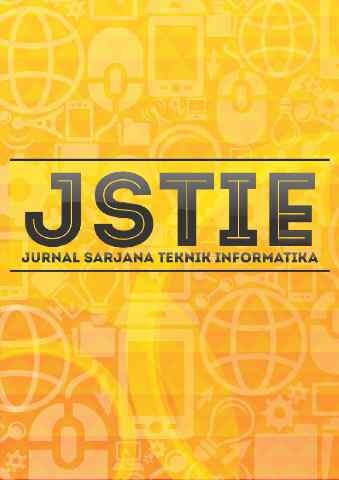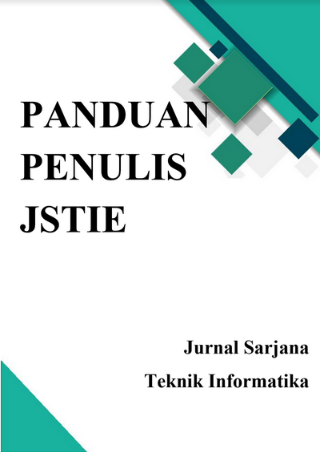Analisis dan Desain User Interface (UI) dan User Experience (UX) Aplikasi Borneojek Menggunakan Metode Evaluasi Heuristik
DOI:
https://doi.org/10.12928/jstie.v10i2.23545Keywords:
User Interface, User Experience, Evaluasi Heuristik, Aplikasi, Severity RatingAbstract
Borneojek merupakan layanan terkini yang dapat melayani transportasi bermotor, transportasi mobil, pemesanan makanan atau kuliner dan layanan belanja di kota Pangkalan Bun. Hasil wawancara bersama founder aplikasi Borneojek pada tahun 2021 sebanyak 70% pengguna menggunakan fitur kuliner dari aplikasi Borneojek. Untuk mengetahui bagaimana evaluasi dari aplikasi Borneojek dan mendapatkan rekomendasi perbaikan aplikasi Borneojek khususnya pada fitur kuliner maka dilakukan analisis dan desain user interface dan user experience aplikasi Borneojek. Metode yang digunakan dalam penelitian ini adalah metode evaluasi heuristik. Dengan severity rating menjadi skala yang digunakan dalam menilai tingkat permasalahan dari 10 prinsip heuristik dan menggunakan 4 orang evaluator. Hasil penilitian ini yaitu masih ditemukannya 21 permasalahan usability dari 10 prinsip heuristik Nielsen oleh evaluator. Kemudian dilakukan pengembangan desain rekomendasi berupa prototype. Dari penilaian yang dihasilkan yaitu fitur kuliner aplikasi Borneojek menghasilkan nilai severity rating yang lebih besar dari nilai severity rating desain rekomendasi yang berarti desain rekomendasi yang telah dikembangkan sudah lebih baik karena semakin rendah nilai severity rating maka semakin sedikit permasalahan yang ada.
References
J. Nielsen, “10 Heuristics for User Interface Design,” Nielsen Norman Group, 1995. .
A. Purnomo, “Pengembangan User Experience (Ux) Dan User Interface (Ui) Aplikasi Ibeauty Berbasis Android,” JSTIE (Jurnal Sarj. Tek. Inform., vol. 6, no. 3, pp. 18–27, 2018, doi: 10.12928/jstie.v6i3.15251.
M. Huda, W. W. Winarno, and E. T. Lutfi, “Evaluasi User Interface Pada Sistem Informasi Akademik Di Stie Putra Bangsa Menggunakan Metode User Centered Systems Design,” J. Ekon. Dan Tek. Inform., vol. 5, no. 2, pp. 42–59, 2017, [Online]. Available: http://e-journal.polsa.ac.id/index.php/jneti/article/download/77/64.
M. Penha, W. F. M. Correia, F. D. C. Campos, Fabio, and M. D. L. N. Barros, “Heuristic evaluation of Usability -a Case Study with the Learning Management System,” LMS IFPE. Int. J. Humanit. Soc. Sci., 2014.
I. N. Arifin, H. Tolle, and R. I. Rokhmawati, “Evaluasi dan Perancangan User Interface untuk Meningkatkan User Experience Menggunakan Metode Human-Centered Design dan Heuristic Evaluation Pada Aplikasi Ezypos,” J. Pengemb. Teknol. Inf. dan Ilmu Komput. Univ. Brawijaya, vol. 3, no. 2, pp. 1725–1732, 2019.
J. L. Le Bel, “University Students’ Heuristic Usability Inspection of the National Library of Turkey Website,” Aslib J. Inf. Manag., vol. 2050–3806, 2018.
R. Faticha, A. Aziza, and Y. T. Hidayat, “Analisa Usability Desain User Interface Pada Website,” vol. 13, no. 1, pp. 7–11, 2019.
“Sistem Informasi - Romindo Romindo, Muttaqin Muttaqin, Rasinus Rasinus, LM Fajar Israwan, Yuswardi Yuswardi, Abdul Karim, Afni Nia Sari, Ega Evinda Putri, Khairunnisa Samosir - Google Buku.” https://books.google.co.id/books?hl=id&lr=&id=rnY6EAAAQBAJ&oi=fnd&pg=PA59&dq=sistem+informasi+adalah&ots=AeYBwYqf1p&sig=eSZAlbVEiD4G0cSTYAbJAFCdHDI&redir_esc=y#v=onepage&q=sistem informasi adalah&f=false (accessed Aug. 23, 2021).
F. A. Rosyidi, S. H. Wijoyo, and N. H. Wardani, “Evaluasi Usability Pada Game Dota 2 Menggunakan Metode Heuristic Evaluation,” J. Pengemb. Teknol. Inf. dan Ilmu Komput., vol. 3, no. 7, pp. 7014–7021, 2019.
R. Hartson and P. Pyla, The UX Book. .
S. Hanik Mujiati, “Analisis Dan Perancangan Sistem Informasi Stok Obat Pada Apotek Arjowinangun,” Indones. J. Comput. Sci. - Speed FTI UNSA, vol. 9330, no. 2, pp. 1–6, 2013.
G. Pandusarani, A. H. Brata, and E. M. A. Jonemaro, “Analisis User Experience Pada Game CS:GO dengan Menggunakan Metode Cognitive Walkthrough dan Metode Heuristic Evaluation,” J. Pengemb. Teknol. Inf. dan Ilmu Komput., vol. 2, no. 3, pp. 940–950, 2017, [Online]. Available: http://j-ptiik.ub.ac.id.
C. R. Mabruri, “Evaluasi Layanan Pengaduan Online Ombudsman Republik Indonesia dengan Usability Evaluation Methods,” Progr. Stud. Sist. Inf. Fak. Sains Dan Teknol. Univ. Islam Negeri Syarif Hidayatullah Jakarta, 2019.
J. Nielsen, “Heuristic Evaluation: How-To: Article by Jakob Nielsen,” Nielson Norman GroupNorman, 1995.
M. Khafid and A. Widianto, “PENINGKATAN KUALITAS PELAYANAN PESERTA BPJS KETENAGAKERJAAN DENGAN METODE FUZZY-SERVQUAL DAN INDEX PGCV (Studi Kasus BPJS Ketenagakerjaan Cabang Perintis Brebes),” J. MONEX, vol. 6, no. 1, pp. 230–235, 2017.
J. Avilés, “Study on Heuristic Usability Evaluation for Mobile Applications,” ETSI_Informatica, no. July, 2015, [Online]. Available: http://oa.upm.es/37202/.
Downloads
Published
Issue
Section
License
License and Copyright Agreement
In submitting the manuscript to the journal, the authors certify that:
- They are authorized by their co-authors to enter into these arrangements.
- The work described has not been formally published before, except in the form of an abstract or as part of a published lecture, review, thesis, or overlay journal. Please also carefully read Journal Posting Your Article Policy.
- The work is not under consideration for publication elsewhere.
- The work has been approved by all the author(s) and by the responsible authorities – tacitly or explicitly – of the institutes where the work has been carried out.
- They secure the right to reproduce any material that has already been published or copyrighted elsewhere.
- They agree to the following license and copyright agreement.
Copyright
Authors who publish with Jurnal Sarjana Teknik Informatika agree to the following terms:
- Authors retain copyright and grant the journal right of first publication with the work simultaneously licensed under a Creative Commons Attribution License (CC BY-SA 4.0) that allows others to share the work with an acknowledgement of the work's authorship and initial publication in this journal.
- Authors are able to enter into separate, additional contractual arrangements for the non-exclusive distribution of the journal's published version of the work (e.g., post it to an institutional repository or publish it in a book), with an acknowledgement of its initial publication in this journal.
- Authors are permitted and encouraged to post their work online (e.g., in institutional repositories or on their website) prior to and during the submission process, as it can lead to productive exchanges, as well as earlier and greater citation of published work.








